At Sebo Marketing, we hear people all the time say something like “I want to show up higher in Google.” This phrase “show up higher in Google” can have several different meanings, as the Google Results page is a beautiful place that is a little more involved than many people think. While most people probably see the search results page of Google on a daily basis, many website owners may not know that there is not just one, but at least four ways to show up in a Google search result. In this article, we will explore all of the different areas of the Google Search results page and the different ways that your website could potentially show in those results. We hope that this information can help you make more informed decisions about your website and where to best target your efforts in showing up higher in Google.
The Google Search Results Page
We are all familiar with the Google search results page, and for most of us, we probably view a Google search results page multiple times a day. But did you know that the Google results page is actually made up of lots of different types of results, all designed to answer your query in the fraction of a second? The Google results page is composed of four types of results, namely:
- SEO or organic search results
- Google My Business (GMB)
- Paid Ads or pay-per-click advertising
- No Click/Zero Click results.
Each result serves a different type of purpose in answering a searcher’s query and has different requirements for a website to be listed. In this article, we will discuss each type in detail as well as the purpose for each result and the requirements and strategies to be listed and to rank well in each area.
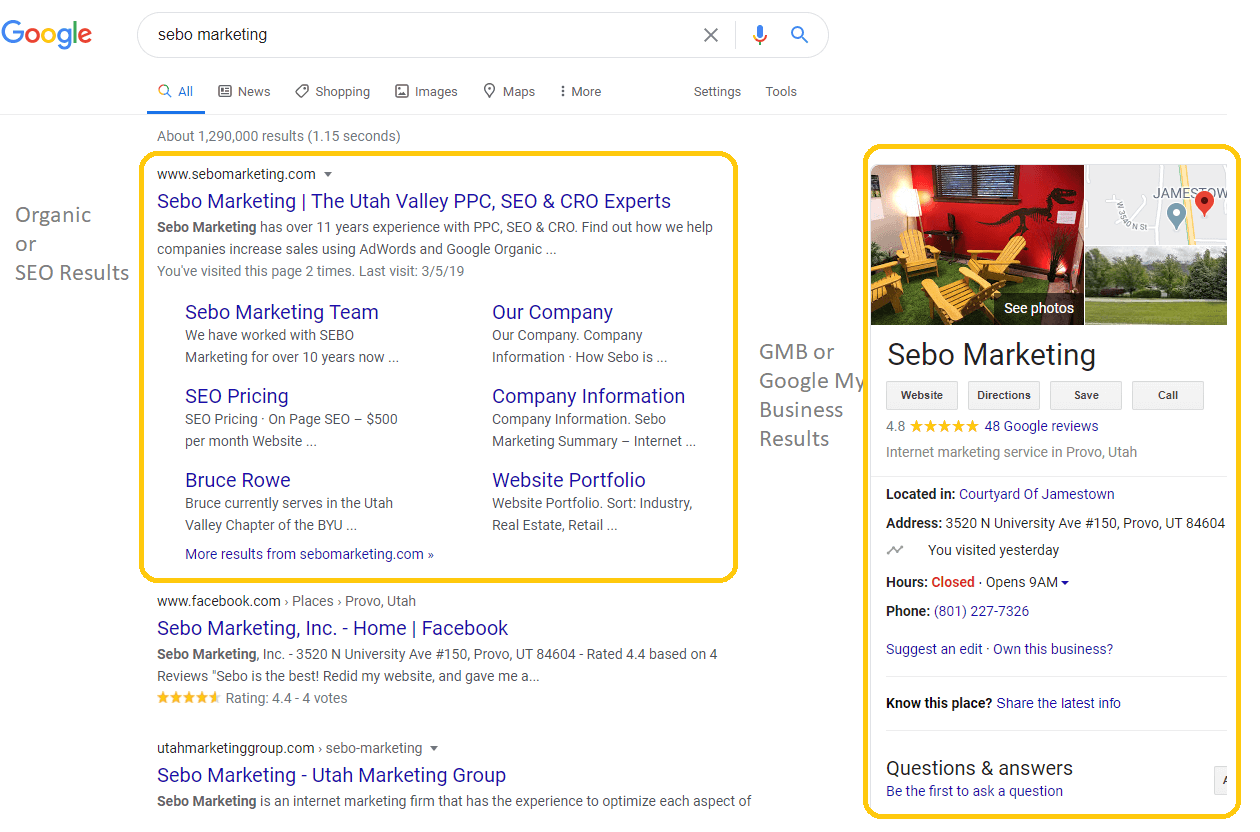
Organic Search Results
Organic search results are the most common type of search results in Google. When you type in a query, you will typically see a list of thousands of potential websites to answer your search, with up to ten results listed on the first page of your search results. These are called organic or SEO results. No one pays to be listed here, and Google uses a complex algorithm to list sites in order of what will most likely satisfy the user’s search. Websites are more likely to appear higher in the organic search results when they follow SEO best practices, such as making sure to include the target keyword in the Title Tag and other appropriate places on the site, having a good number of backlinks to your site, and making sure that your site’s landing page provides a quality experience for the user.
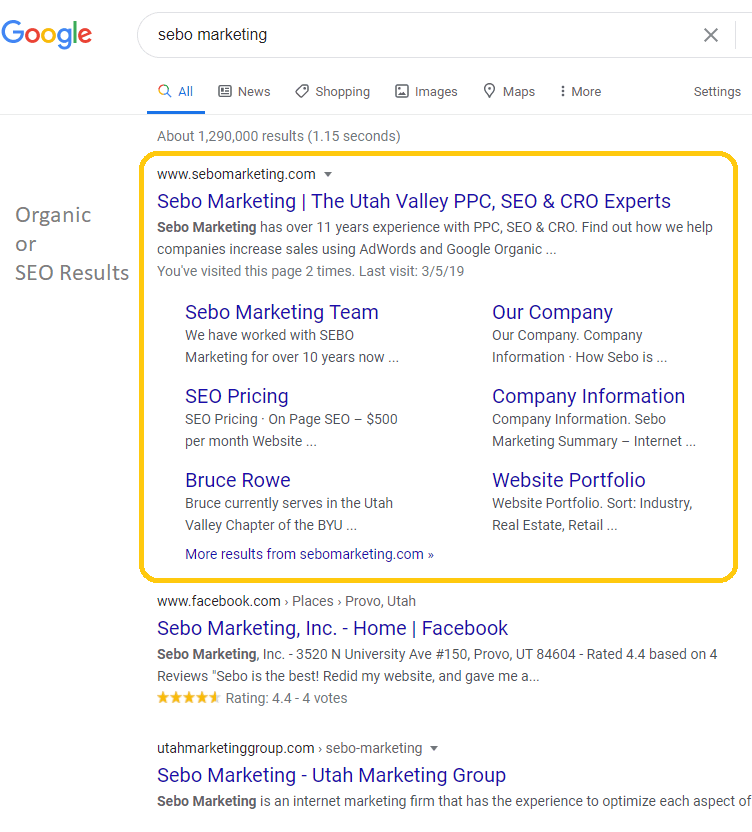
Individuals and organizations who want their site to show up higher in these results can implement these SEO principles on their own, or through using an SEO professional. SEO professionals provide consistent and deliberate SEO efforts on a site on a regular basis to help improve the site’s rankings for important keyword phrases over time to drive more search traffic to the site. SEO is most effective as a long term strategy for improving site rankings and will take longer to see improvement in traffic to your website than paid ads. However, improving your organic SEO results over time is one of the best long term strategies for maximizing your site’s potential in Google search results.
Google My Business (GMB)
Another very common search result that many people misunderstand is the Google My Business listings or GMB results. Google My Business results appear on the side of the page for desktop or near the top of the results for mobile, and are designed primarily to help searchers locate a physical business location. Google intends that these results be show for a query where the user is most likely looking to visit a physical business and needs to find the address, hours, and even reviews of that business. In order to show up here, your business must have a physical location that a user would want to show up at to purchase a good or service or to get information about your business. The business would then need to apply for a GMB listing and go through Google’s verification process before being able to be shown in search results.
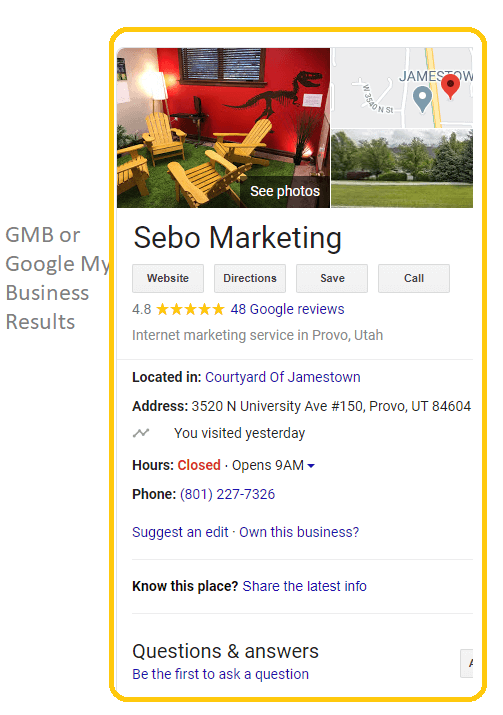
The likelihood of a business showing in the GMB section largely depends on the searcher’s query and the proximity of the searcher to your business. A searcher looking for a location to get ice cream doesn’t want to be shown an ice cream shop 100 miles away. Businesses should also take care to make sure that their Google My Business listings remain updated with current location, website, hours and contact information so as to have the most effective user experience possible with their listing. Reviews are also a key part of GMB listings that can help customers be more likely to visit your location due to positive social proof. Consider soliciting reviews from customers or others who are familiar with your company’s services as another way to further improve your GMB listing.
Paid Search Ads
Most people have seen a paid search ad result before, but many people are unfamiliar with how these paid ads actually work. Paid search ads show up above the organic results and are typically characterized by the small word “Ad” next to the search result as well as some ad extensions underneath the website and description.
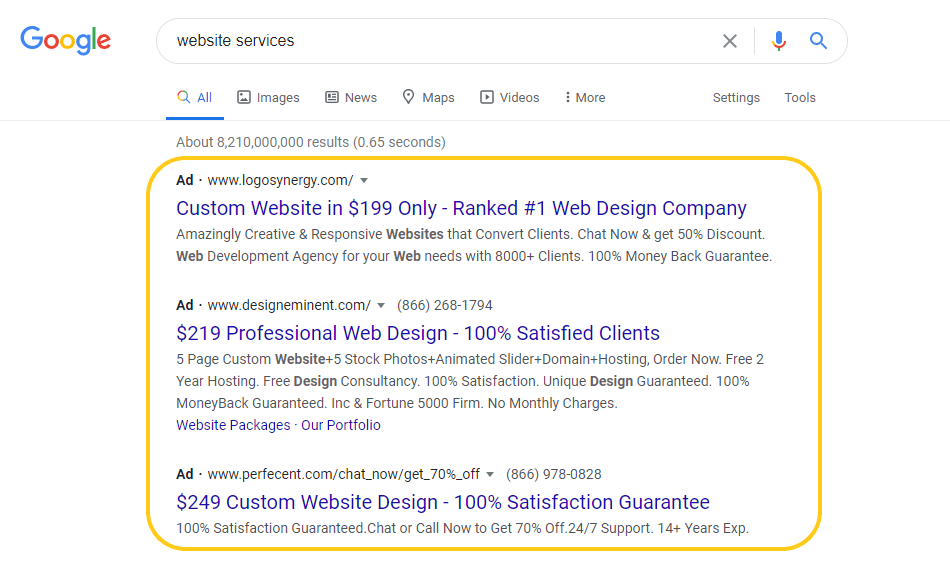
Organizations use paid ads as an additional way to help users find their website. However, to determine which ads show up for a users query, and in what order they show, requires a behind the scenes process that is both simple and amazing. When a user types in a query, in a fraction of a second Google holds what is known as an ad auction. Then, based on a number of factors including the person’s bid, as well as the ad’s Quality Score, certain ads are shown and are ranked according to potential to solve the problem that produced that query from the Google searcher. A Bid is the maximum amount a person is willing to pay to have their ad shown, and the Quality Score is a score Google assigns to ads based on a number of factors including landing page experience, keyword matching user intent and several others. The Ad Rank determines which ad shows up first, which shows up next, and which ads won’t show up at all. The Ad Rank considers the Quality Score and bid and budget factors.
When a particular ad wins at auction and is shown in the search results, the owner of that ad does not automatically pay their bid. The owner only pays when a user clicks on that person’s ad. Thus, these ads are often termed “Pay Per Click,” because an advertiser only pays for users who are interested in the product or service they are offering. Google Ads (formerly AdWords) is the program that helps advertisers develop these ads, and is a brilliantly designed system to help businesses advertise online to those who are actively searching for what they offer. Anyone can use Google Ads services and can create ads themselves or can utilize a professional service to help them create and optimize their ads for best performance.
Google Ads also manages ads on YouTube, shopping ads, Display Network (GDN) ads, image ads, sponsored GMB ads, and other options as well. Those will not be discussed in this article.
No Click/Zero Click Results
No Click results are a more recent development as in many cases now, Google wants to get you information without a click. You’ve likely seen these types of results and not even realized it. To show up in a “No Click result”, it still requires a website and some special snippets of code inside the website code as well. It looks something like this:
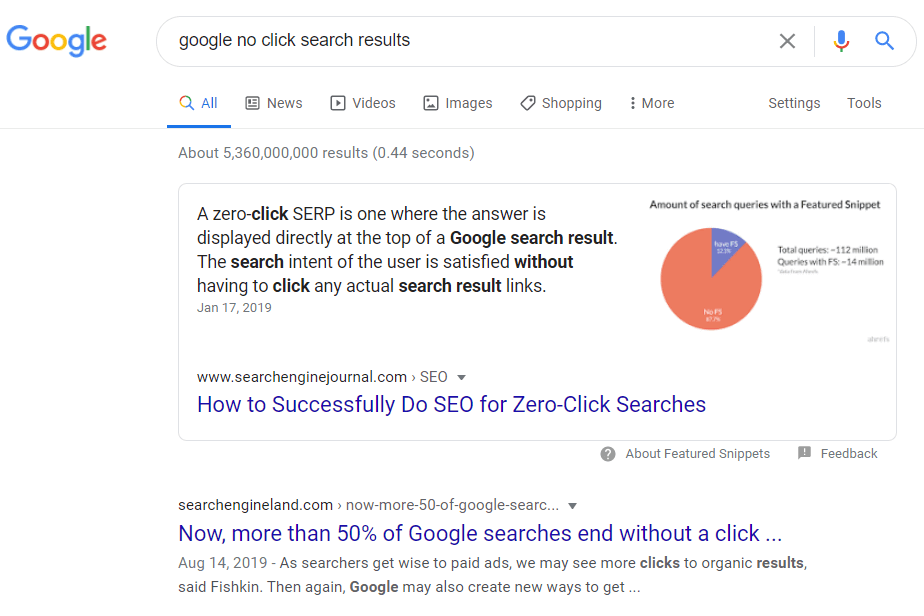
No Click or Zero Click search results are more common in mobile and are designed to provide the user a short and quick answer to their question without needing to click on the actual website to find their answer. These types of results often show up for queries involving dates, times, time zones, currency conversions, the definition of words and even the names of some products. They often take the form of featured snippets and essentially, they work by pulling a short description from a website that is shown at the top of the results page (SERPs), so that the user gets the answer to their question and does not need to click on the website. Most often, the best way to be shown as a featured snippet is to be sure that your website includes the correct code to allow you to be shown and then working to improve your SEO rankings. Organizations can visit with a professional SEO company for further help in navigating SEO and featured snippets.
Summary
In summary, the desire to “show up higher in Google” requires a little more thought than many people realize. Understanding the basics of how Google works and how search results appear can help you better utilize your website to grow your business online. Google search results are composed of four different types of results, namely organic search or SEO results, Google My Business (GMB), Paid ads or pay-per-click (PPC) advertising, and Zero Click results. Identifying which types of search results your organization would like to show up for, as well as the keywords and phrases that will most help your business, will be the most effective way to use Google and its magnificent power for search to bring more traffic to your website and more customers to your organization.
Contact Sebo Marketing
If you have questions regarding Google, or Google search results or would like help with your website and digital marketing needs, feel free to contact us by phone or by sending us a message via our form below. Founded in 2005, we have been helping businesses improve their website and Google search result performance for over 15 years. We would love know how we can help you achieve your website marketing goals.
